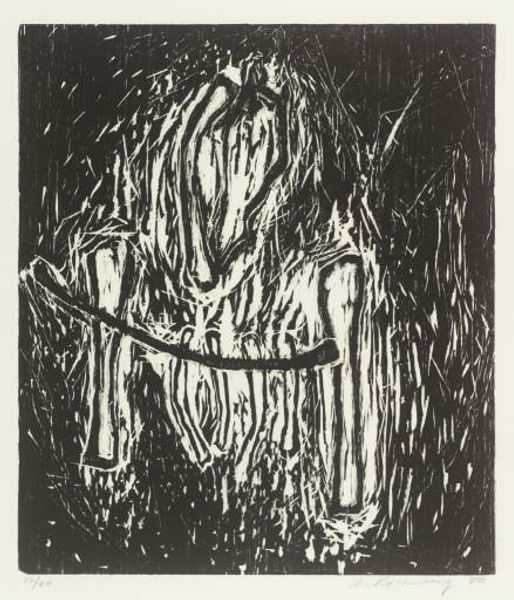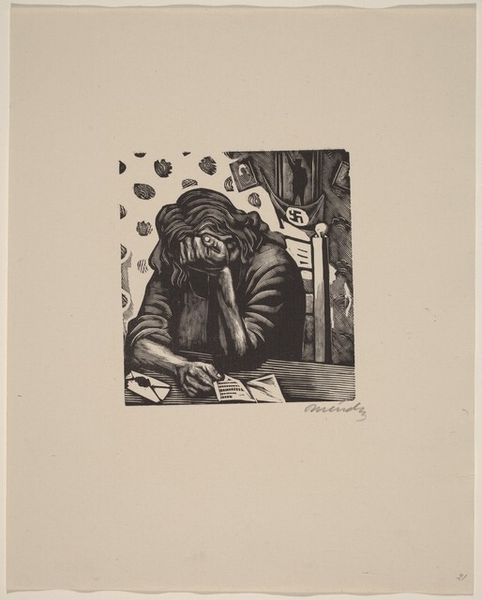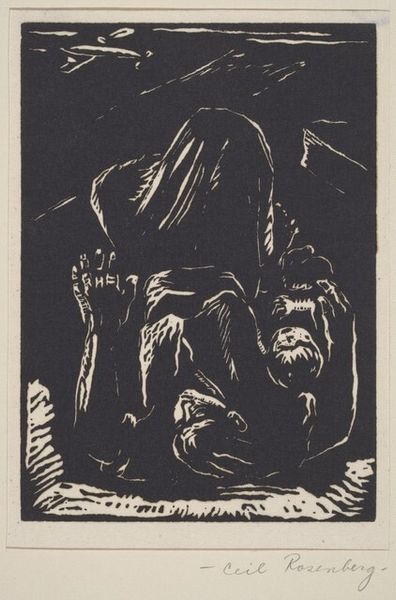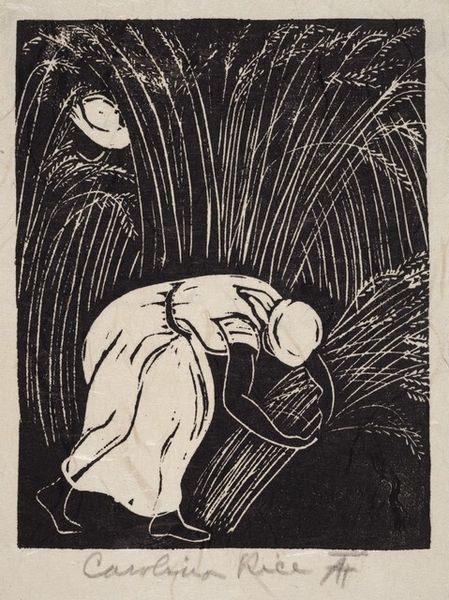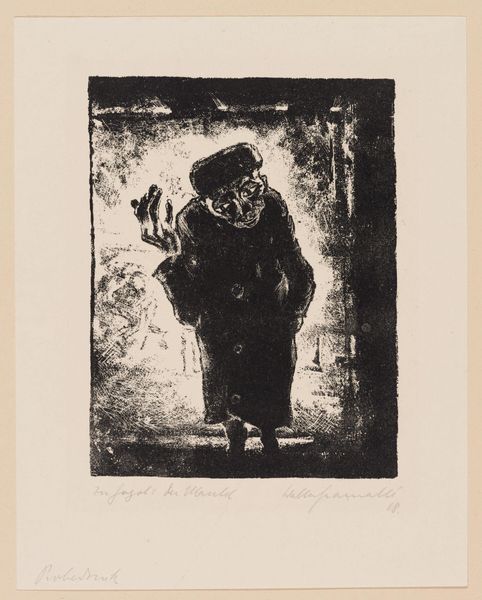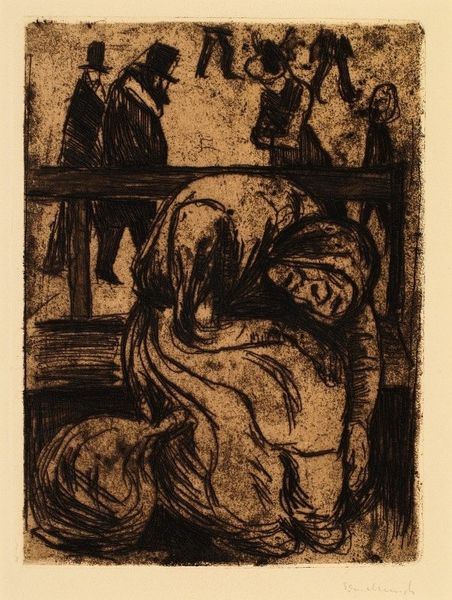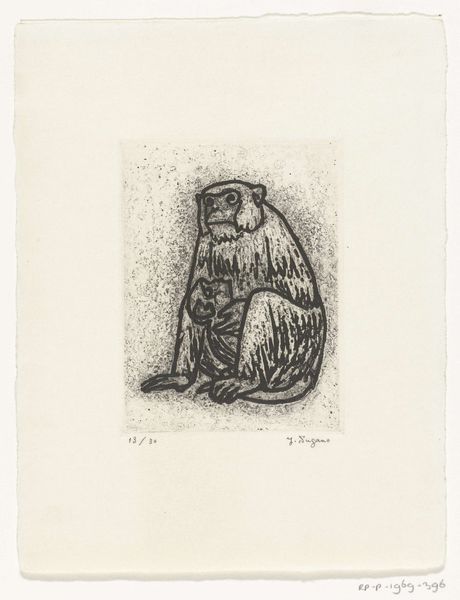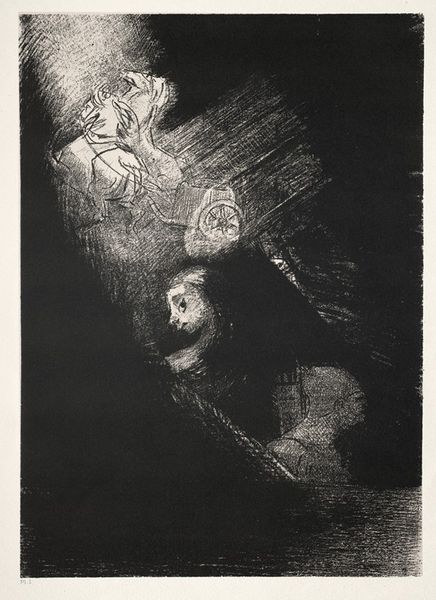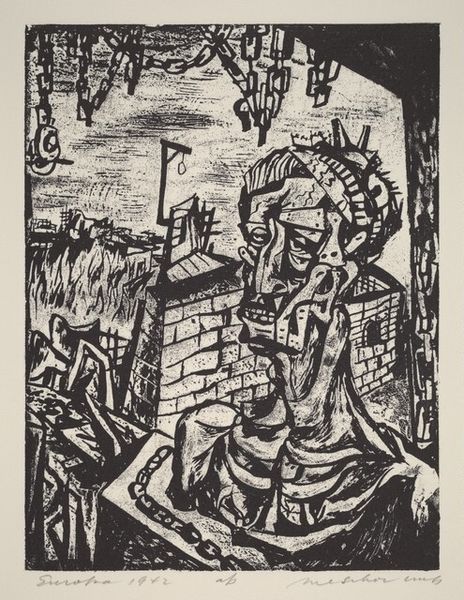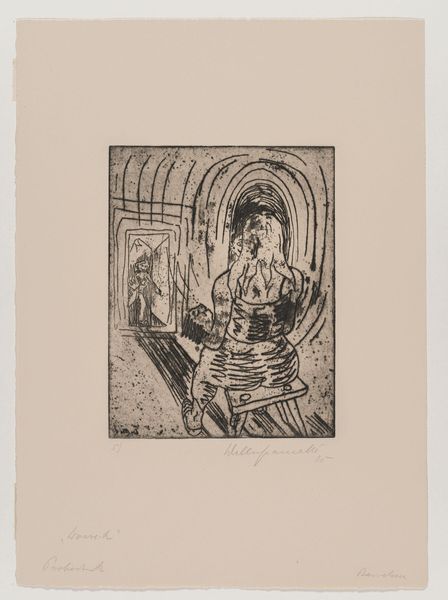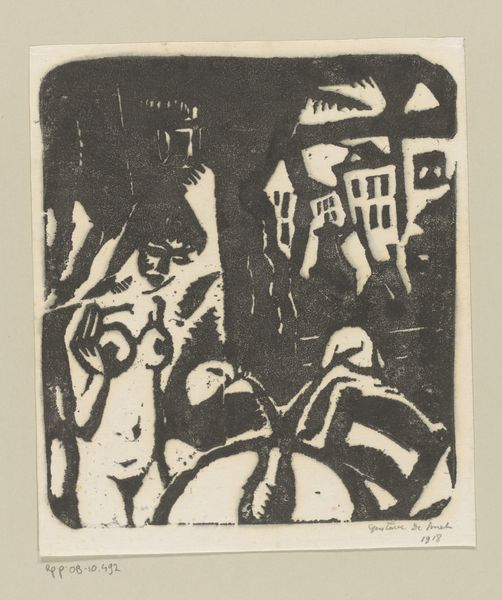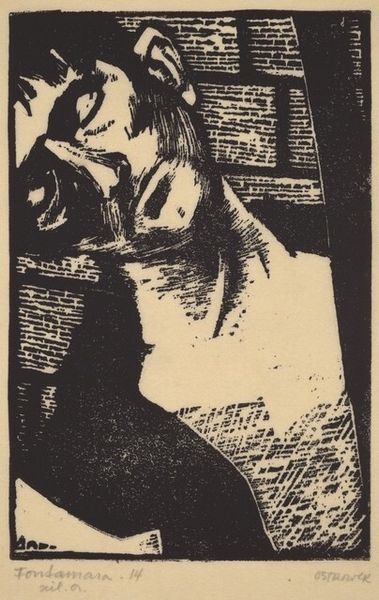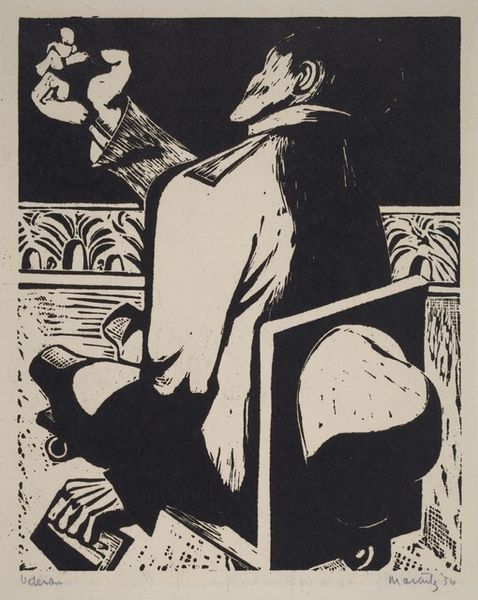
print, woodcut
# print
#
caricature
#
harlem-renaissance
#
figuration
#
social-realism
#
woodcut
#
realism
Dimensions: image: 30.7 × 27.5 cm (12 1/16 × 10 13/16 in.) sheet (irreg.): 34.9 × 32.5 cm (13 3/4 × 12 13/16 in.)
Copyright: National Gallery of Art: CC0 1.0
Curator: Margaret Burroughs’ woodcut print, "Sleeping Boy," created in 1953, uses the graphic clarity of black and white to arresting effect. Editor: My first impression is one of vulnerability and quiet despair. The subject's hunched posture communicates so much with so little visible detail. It's very impactful. Curator: Indeed, the boy's pose, his face hidden against his arms, echoes motifs of sorrow found throughout art history. It invites contemplation about the child's internal state and broader themes of innocence and hardship. There are strong parallels with social realism here. Editor: And thinking of Burroughs' choice of woodcut—it strikes me how the sharp, almost brutal cuts of the tool on the woodblock reflect, perhaps intentionally, a harsh social reality. The work is very deliberate in its materiality. The grain becomes like the coarse brick of the backdrop and rough fabric. Curator: I agree. The simplified form, typical of the woodcut process, also invites us to consider universal experiences. Is this the slumber of a child exhausted from play or an allegory of burdened youth seeking escape? Perhaps Burroughs used a boy for the general meaning he evokes of youth. Editor: Considering that it's dated 1953, I am particularly interested in Burroughs' role as an activist. What did the processes of artistic production mean to artists operating during such times of socio-political reform? She was part of an artistic milieu, but each decision to create and circulate works like this in this medium held weight. Curator: Absolutely. As an educator and community organizer, Burroughs championed Black artists and culture. We can think about how works like this sought to uplift Black Americans. Editor: Considering its deliberate use of black and white—the contrast gives such striking dimension that speaks to the depth and intensity of emotional content. The choice heightens, maybe even abstracts reality for a specific end. Curator: It leaves one thinking about what the dreams of this child might be. Does he dream of something beautiful, something that will give him hope, or of the hardships in the life he will probably lead? Editor: Thinking of the impact that this material’s form gives to that scene I am left thinking more on what hopes the artist, who shares a similar story, might imbue into these very harsh but elegant medium of material expression.
Comments
No comments
Be the first to comment and join the conversation on the ultimate creative platform.
